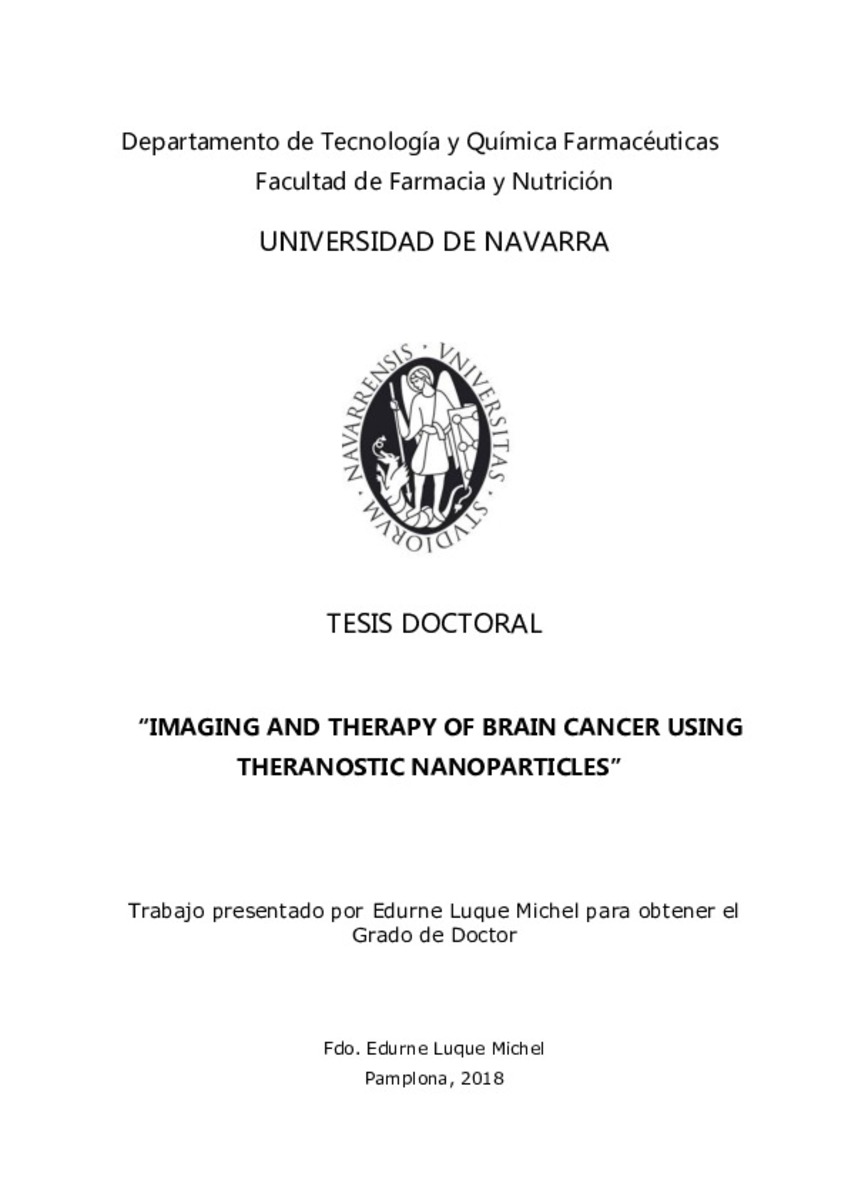Imaging and therapy of brain cancer using theranostic nanoparticles
Palabras clave :
Materias Investigacion::Farmacia::Farmacia y farmacología
Materias Investigacion::Ciencias de la vida::Biotecnología
Neurociencias
Ciencias médicas
Fecha de publicación :
6-feb-2019
Fecha de la defensa:
23-nov-2018
Cita:
LUQUE MICHEL, Edurne. "Imaging and therapy of brain cancer using theranostic nanoparticles". Blanco Prieto, M. J. (dir.). Tesis doctoral. Universidad de Navarra, 2018.
Aparece en las colecciones:
Estadísticas e impacto
0 citas en

0 citas en

Los ítems de Dadun están protegidos por copyright, con todos los derechos reservados, a menos que se indique lo contrario.








